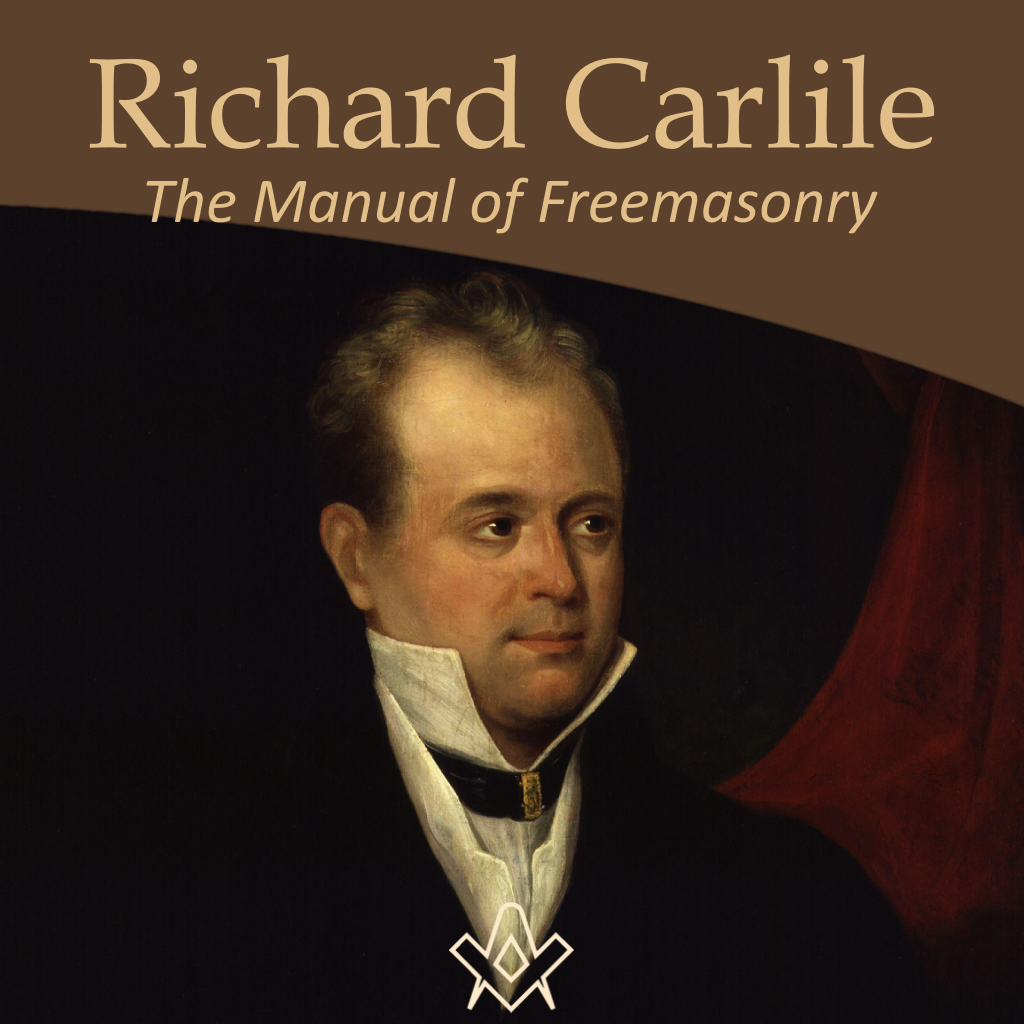To his credit, Richard Carlile’s Manual of Freemasonry (1831) was so successful that it was reprinted many times and was used by Freemasons throughout the remaining nineteenth and early twentieth centuries in England as a source for learning ritual.
Richard Carlile (8 December 1790 – 10 February 1843) was an important agitator for the establishment of universal suffrage and freedom of the press in the United Kingdom.
Born in Ashburton, Devon, he was the son of a shoemaker, at the age of six he went for free education to the local Church of England school, then at the age of twelve he left school for a seven-year apprenticeship to a tinsmith in Plymouth, England.
In 1813 he married, and moved to Holborn Hill in London. Jane Carlile gave birth to five children, three of whom survived.
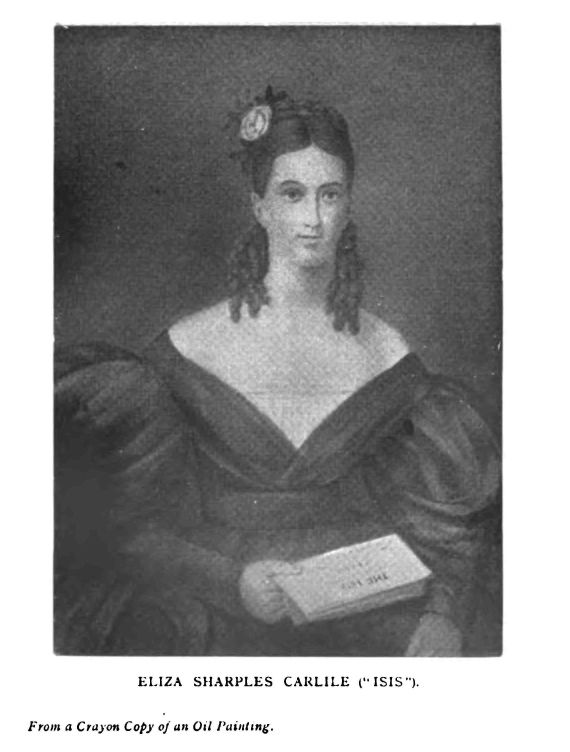
Portrait of Eliza Sharples Carlile (1803-1852) from The Battle of the Press: As Told in the Story of the Life of Richard Carlile (1899) by Theophila Carlile Campbell
IMAGE LINKED: wikimedia Attribution 4.0 International (CC BY 4.0)
Then some time after 1829, Carlile met Eliza Sharples (1803—1852) who is noted as the first female freethought lecturer in England. She became Carlile’s common law wife, together they had at least four children.
‘His interest in politics was kindled first by economic conditions in the winter of 1816 when Carlile was put on short-time work by his employer creating serious problems for the family:
‘I shared the general distress of 1816 and it was this that opened my eyes.’
He began attending political meetings where speakers like Henry Hunt complained that only three men in a hundred had the vote, and was also influenced by the publications of William Cobbett.
As a way of making a living Carlile sold the writings of parliamentary reformers such as Thomas Paine on the streets of London, often walking ‘thirty miles for a profit of eighteen pence’.
Note: Though there is no evidence Thomas Paine was a Freemason, he penned ‘An Essay on the Origin of Free-Masonry” (1803–1805) about Freemasonry being derived from the religion of the ancient Druids. To be continued . . .
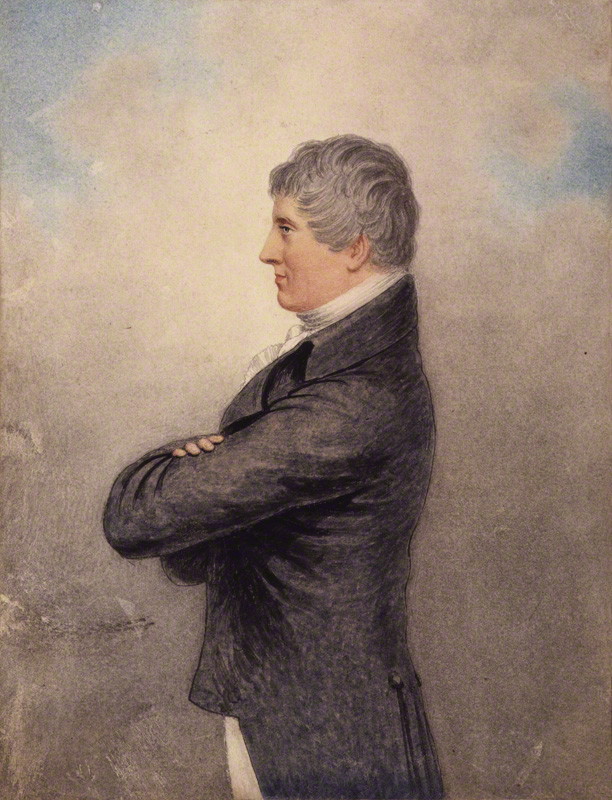
Portrait (c. 1810), watercolour, of Henry Hunt (1773–1835) by Adam Buck (1759–1833)
IMAGE LINKED: wikimedia Attribution 4.0 International (CC BY 4.0)
Henry ‘Orator’ Hunt (6 November 1773 – 15 February 1835) was a British radical speaker and agitator remembered as a pioneer of working-class radicalism and an important influence on the later Chartist movement. He advocated parliamentary reform and the repeal of the Corn Laws.
William Cobbett, portrait in oils, possibly by George Cooke, about 1831 National Portrait Gallery, London
IMAGE LINKED: wikimedia Attribution 4.0 International (CC BY 4.0)
William Cobbett (9 March 1763 – 18 June 1835) was an English pamphleteer, independent journalist, Member of Parliament.
Along with a popular agrarian faction, he argued that reforming Parliament, including abolishing ‘rotten boroughs’, unnecessary foreign activity and suppression of wages would promote internal peace and ease the poverty of farm labourers and smallholders.
He was among the pre-party lobbies who backed lower taxes, saving and preferably reversing enclosure of the commons and resistance to the 1821-adopted gold standard.
In April 1817 he formed a publishing business with the printer William Sherwin and rented a shop in Fleet Street, London.
To make political texts such as Paine’s books The Rights of Man and the Principles of Government available to the poor he split them into sections which he sold as small pamphlets, similarly publishing The Age of Reason and Principles of Nature.
He issued unauthorised copies of Southey’s Wat Tyler and after the radical William Hone‘s arrest in May 1817, he reissued the parody of parts of the Book of Common Prayer for which Hone was to be tried, then was himself arrested in August 1817 and held without charge until Hone was acquitted in December of that year.

William Hone, by William Patten, given to the National Portrait Gallery, London in 1899
IMAGE LINKED: wikimedia Attribution 4.0 International (CC BY 4.0)
William Hone (3 June 1780 – 8 November 1842) was an English writer, satirist and bookseller.
His victorious court battle against government censorship in 1817 marked a turning point in the fight for British press freedom.
Carlile took on distributing the banned Radical weekly The Black Dwarf at a time when the government was prosecuting publishers:
The Habeas Corpus Act being suspended…all was terror and alarm, but I take credit to myself in defeating the effect of these two Acts upon the Press…Of imprisonment I made sure, but I felt inclined to court it than to shrink from it.
Carlile then brought out a radical journal, Sherwin’s Political Register, which reported political meetings and included extracts from books and poems by supporters of the reform movement.
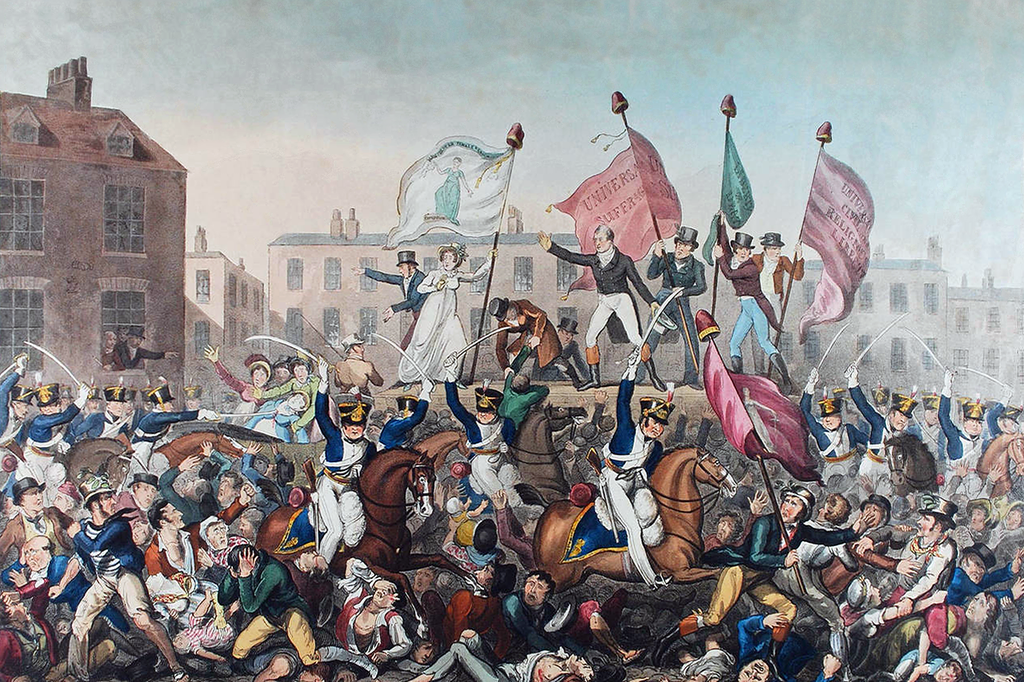
a coloured engraving that depicts the Peterloo Massacre (military suppression of a demonstration in Manchester, England by cavalry charge on August 16, 1819 with loss of life) in Manchester, England.
IMAGE LINKED: wikimedia Attribution 4.0 International (CC BY 4.0)
Peterloo and The Republican
Carlile was one of the scheduled main speakers at the reform meeting on 16 August 1819 at St. Peter’s Fields in Manchester. Just as Henry Hunt was about to speak, the crowd was attacked by the yeomanry in what became known as the Peterloo massacre.
Carlile escaped and was hidden by radical friends before he caught the mail coach to London and published his eyewitness account, giving the first full report of what had happened, in Sherwin’s Weekly Political Register of 18 August 1819.
His placards proclaimed ‘Horrid Massacres at Manchester’.
The government responded by closing Sherwin’s Political Register, confiscating the stock of newspapers and pamphlets.
Carlile changed the name to The Republican and in its issue of 27 August 1819, demanded that:
The massacre… should be the daily theme of the Press until the murderers are brought to justice…. Every man in Manchester who avows his opinions on the necessity of reform, should never go unarmed – retaliation has become a duty, and revenge an act of justice.
Carlile was prosecuted for blasphemy, blasphemous libel and sedition for publishing material that might encourage people to hate the government in his newspaper, and for publishing Tom Paine’s Common Sense, The Rights of Man and the Age of Reason (which criticised the Church of England).
In October 1819, he was found guilty of blasphemy and seditious libel and sentenced to three years in Dorchester Gaol with a fine of £1,500.
When he refused to pay the fine, his premises in Fleet Street were raided and his stock was confiscated.
While he was in jail he continued to write articles for The Republican which was now published by Carlile’s wife Jane, and thanks to the publicity it now outsold pro-government newspapers such as The Times.
To curb newspapers the government had raised the ½d tax on newspapers first imposed in 1712 to 3½d in 1797, then 4d in 1815.
From December 1819 it set a minimum price of 7d and further restrictions. At a time when workers earned less than 10 shillings (120d.) a week this made it hard for them to afford radical newspapers, and publishers tried various strategies to evade the tax.
Groups would pool their resources in reading societies and subscription societies to purchase a book or journal in common, and frequently read it aloud to one another as was the case with James Wilson.

Portrait of James ‘Purlie’ Wilson, (1760 – 1820); a Scottish Radical Reformer. c1810
IMAGE LINKED: wikimedia Attribution 4.0 International (CC BY 4.0)
‘James Wilson (3 September 1760 – 30 August 1820), commonly known as ‘Purly Wilson’, was a Scottish revolutionary, a prominent figure in the Radical movement seeking electoral reform.
He was a weaver from the town of Strathaven in Lanarkshire, but as the Industrial Revolution affected the weaving trade he had to find alternative work.
A free-thinking man, he was sceptical of religion and disliked the government of the day.
He read Thomas Paine’s Rights of Man and started to become active in lobbying for political reform.
By 1821, Carlile was a declared atheist (having previously been a Deist) and published his Address to Men of Science, in favour of materialism and education.
In the same year Jane Carlile was in turn sentenced to two years imprisonment for seditious libel, and her place as publisher was taken by Richard Carlile’s sister, Mary.
Within six months she was imprisoned for the same offence.
The process was repeated with eight of his shop workers, and over 150 men and women were sent to prison for selling The Republican.
Carlile’s sentence ended in 1823, but he was immediately arrested and returned to prison for not paying his £1,500 fine, so the process continued until he was eventually released on 25 November 1825.
In the next edition of The Republican he expressed the hope that his long confinement would result in the freedom to publish radical political ideas.
An example of the support he received from around the country is the £1.5.1 sent to him in Dorchester jail by forty working men in the West Yorkshire village of Hunslet, accompanied by a noble letter on behalf of those ‘few Friends to Truth and Justice’.
He then published further journals, The Lion which campaigned against child labour and The Promptor.
He argued that ‘equality between the sexes’ should be the objective of all reformers, and in 1826 published Every Woman’s Book advocating birth control and the sexual emancipation of women.
Cobbett denounced this book as ‘so filthy, so disgusting, so beastly, as to shock even the lewdest men and women.
Carlile was an advocate of the Christ myth theory. He did not believe that Jesus existed. He debated Unitarian minister John Relly Beard in The Republican, 1826.
Carlile was jailed again in 1831 under the charge of seditious libel, given two and a half years for writing an article in support of agricultural labourers campaigning against wage cuts and advising the strikers to regard themselves as being at war with the government.
He left prison deeply in debt, and government fines had taken from him the finances needed to publish newspapers.
His political and social opinions never altered, but his philosophy underwent a change in the 1830s.
In 1837 H. Robinson published the results of his later thinking in the book Extraordinary Conversion and Public Declaration of Richard Carlile of London to Christianity.
In 1834, Carlile was tried for creating a public nuisance, when he displayed two effigies in the windows of his shop at 62 Fleet Street, one in blue representing a broker titled ‘Temporal broker’ and another dressed as a bishop titled ‘Spiritual broker’.
A large group of people were often gathered there, impeding traffic and causing quarrels. Carlile was found guilty, but judgment was respited.
After living for some years in extreme poverty in Enfield, Carlile returned to Fleet Street in 1842, dying there the following year.
He donated his body for medical research. Large numbers of people attended his funeral in Kensal Green Cemetery on Sunday 26 February 1843, where his sons protested at the Christian burial rite being administered in the common grave he was being buried in – citing that he ‘passed his life in opposition to all priestcraft’.

Richard Carlile was not a Freemason, and therefore not under any obligation not to reveal the secrets of Freemasonry.
However, and while imprisoned at Dorchester Gaol, (about 130 miles from London which back in 1800s is about two full days ride by horse drawn stage coach) and clearly with some outside help, he first published a series of Masonic Exposés in The Republican during 1825.
Carlile then reissued the material in a complete volume in 1831, with the title The Manual of Freemasonry, a complete exposé of Masonic rituals that included the three Craft degrees, the Royal Arch, the Mark and the Knight Templar degree, plus others.
To his credit, the exposé was so successful that it was reprinted many times and was used by Freemasons throughout the remaining nineteenth and early twentieth centuries in England as a source for learning ritual.
The book is basically a version of Emulation Ritual, with a few inconsistencies.
After the Union of 1813 (in December of that year) that formed the United Grand Lodge of England, it was necessary that the ritual be standardised, with approval of the Grand Lodges of Ireland and Scotland.
A result of this was the International Compact, which governs relations between the three Grand Lodges.
The ritual to be used in United Grand Lodge of England and in Lodges under that constitution were produced by the Lodge of Reconciliation, which as formed in June 1816. This has formed the basis of Emulation Working since its inception in 1823.
How could Richard Carlile, who not a Freemason, and while imprisoned at Dorchester Gaol, have access to such detailed Masonic Ritual at the very time it was being compiled?
Perhaps he was no more than a ghost writer for the true author, who must have been a member of the Lodge of Reconciliation at the time, who wanted the ritual exposed and printed, so it did, by virtue of public knowledge, become the de facto standard.
United Grand Lodge of England could not possible sanction such a publication of the ritual, which as seen as being the secrets of Freemasonry, by the very fact of their oaths the members had undertaken.
And certainly, United Grand Lodge of England did not need another William Morgan (1774 – c. 1826) affair on its home turf.
This did not work out well for William Morgan or Freemasonry in USA in general. Allegedly, due to some overzealous Freemasons, who took Morgan’s exposé as a violation of his obligation too seriously, brought Freemasonry into disrupt throughout the USA, which took years for it to recover from.
English Freemasonry needed to learn from this and needed a different strategy. The lesson here, ‘don’t use a Freemason to expose the secrets of Freemasonry in print’.
Thereby selecting a non-Mason, already discredited by the establishment, to print the Emulation Ritual, as an exposé, would provide an ideal solution, to establish it as the new standard workings, with plausible deniability.
Step forward Richard Carlile. The Manual Of Freemasonry, published in his name, proved to provide the perfect solution.
No lynching mob as no obligation had been violated. In time, The Manual Of Freemasonry became a bestseller amongst Freemasons as the de facto English Freemason’s Ritual book, and the rest is history so the speak.
The first ‘official’ Emulation ritual book was not published until 1965.


The Battle Of The Press:
As Told In The Story Of The Life Of Richard Carlile By His Daughter Theophila Carlile Campbell
This book is a result of an effort made by us towards making a contribution to the preservation and repair of original classic literature.
In an attempt to preserve, improve and recreate the original content, we have worked towards:
1. Type-setting & Reformatting: The complete work has been re-designed via professional layout, formatting and type-setting tools to re-create the same edition with rich typography, graphics, high quality images, and table elements, giving our readers the feel of holding a ‘fresh and newly’ reprinted and/or revised edition, as opposed to other scanned & printed (Optical Character Recognition – OCR) reproductions.
2. Correction of imperfections: As the work was re-created from the scratch, therefore, it was vetted to rectify certain conventional norms with regard to typographical mistakes, hyphenations, punctuations, blurred images, missing content/pages, and/or other related subject matters, upon our consideration.
Every attempt was made to rectify the imperfections related to omitted constructs in the original edition via other references.
However, a few of such imperfections which could not be rectified due to intentional\unintentional omission of content in the original edition, were inherited and preserved from the original work to maintain the authenticity and construct, relevant to the work.
We believe that this work holds historical, cultural and/or intellectual importance in the literary works community, therefore despite the oddities, we accounted the work for print as a part of our continuing effort towards preservation of literary work and our contribution towards the development of the society as a whole, driven by our beliefs.
We are grateful to our readers for putting their faith in us and accepting our imperfections with regard to preservation of the historical content. HAPPY READING!

Rediscovered Rituals of English Freemasonry
by David Harrison
This in-depth work examines a compendium of Masonic rituals found in Richard Carlile’s once popular Manual of Freemasonry,some of the exotic high degrees displayed in his exposé being regularly practiced in England during the early nineteenth century.
For the first time, Carlile’s work is fully discussed, degree by degree, to not only reveal the full Masonic story, but to examine the eclectic sources of these degrees and the writers who influenced his work.
Indeed, these writers, such as Thomas Paine, William Finch and Godfrey Higgins will also be observed, along with an examination of the radical, free thinking ideas that Carlile projected in his exposé.
We will see how a rich array of Masonic high grades were practiced at a time of much development and profound change for English Freemasonry; the idea of the complete Masonic story being revealed via these high grades was, to certain English Freemasons, deeply attractive, especially to those who were found wanting after the union of 1813.
Carlile’s exposé, as we shall see,served these needs, his work revealing a rich fusion of radicalism along with an opulent collection of Masonic rituals that emerged from a variety of sources, such as Peter Lambert de Lintot’s Rite of Seven Degrees and the French exposé Les Plus Secrets Mystéres.
In short, Carlile’s work is a highly valued piece of Masonic literature and gives an important insight into what can be seen as a very English practice of high degree Masonry during the time.
This new examination of The Manual of Freemasonry is a much overdue rediscovery of the significance of his work on English Masonry and published in 2020, commemorates the Peterloo Massacre of 1819, an event that was witnessed by Carlile.
available at
Lewis Masonic
Recent Articles: in people series
 Celebrate the extraordinary legacy of The Marquis de La Fayette with C.F. William Maurer's insightful exploration of Lafayette's 1824-25 tour of America. Discover how this revered leader and Freemason was honored by a young nation eager to showcase its growth and pay tribute to a hero of the American Revolution. |
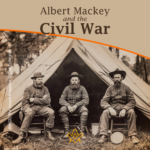 Albert Mackey and the Civil War In the midst of the Civil War's darkness, Dr. Albert G. Mackey, a devoted Freemason, shone a light of brotherhood and peace. Despite the nation's divide, Mackey tirelessly advocated for unity and compassion, embodying Freemasonry's highest ideals—fraternal love and mutual aid. His actions remind us that even in dire times, humanity's best qualities can prevail. |
 Discover the enduring bond of brotherhood at Lodge Dumfries Kilwinning No. 53, Scotland's oldest Masonic lodge with rich historical roots and cultural ties to poet Robert Burns. Experience rituals steeped in tradition, fostering unity and shared values, proving Freemasonry's timeless relevance in bridging cultural and global divides. Embrace the spirit of universal fraternity. |
 Discover the profound connections between John Ruskin's architectural philosophies and Freemasonry's symbolic principles. Delve into a world where craftsmanship, morality, and beauty intertwine, revealing timeless values that transcend individual ideas. Explore how these parallels enrich our understanding of cultural history, urging us to appreciate the deep impacts of architectural symbolism on society’s moral fabric. |
 Discover the incredible tale of the Taxil Hoax: a stunning testament to human gullibility. Unmasked by its mastermind, Leo Taxil, this elaborate scheme shook the world by fusing Freemasonry with diabolical plots, all crafted from lies. Dive into a story of deception that highlights our capacity for belief and the astonishing extents of our credulity. A reminder – question everything. |
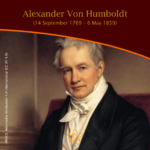 Dive into the extraordinary legacy of Alexander Von Humboldt, an intrepid explorer who defied boundaries to quench his insatiable thirst for knowledge. Embarking on a perilous five-year journey, Humboldt unveiled the Earth’s secrets, laying the foundation for modern conservationism. Discover his timeless impact on science and the spirit of exploration. |
 Voltaire - Freethinker and Freemason Discover the intriguing connection between the Enlightenment genius, Voltaire, and his association with Freemasonry in his final days. Unveil how his initiation into this secretive organization aligned with his lifelong pursuit of knowledge, civil liberties, and societal progress. Explore a captivating facet of Voltaire's remarkable legacy. |
 Robert Burns; But not as we know him A controversial subject but one that needs addressing. Robert Burns has not only been tarred with the presentism brush of being associated with slavery, but more scaldingly accused of being a rapist - a 'Weinstein sex pest' of his age. |
 Richard Parsons, 1st Earl of Rosse Discover the captivating story of Richard Parsons, 1st Earl of Rosse, the First Grand Master of Grand Lodge of Ireland, as we explore his rise to nobility, scandalous affiliations, and lasting legacy in 18th-century Irish history. Uncover the hidden secrets of this influential figure and delve into his intriguing associations and personal life. |
 James Gibbs St. Mary-Le-Strand Church Ricky Pound examines the mysterious carvings etched into the wall at St Mary-Le-Strand Church in the heart of London - are they just stonemasons' marks or a Freemason’s legacy? |
 Freemasonry and the Royal Family In the annals of British history, Freemasonry occupies a distinctive place. This centuries-old society, cloaked in symbolism and known for its masonic rituals, has intertwined with the British Royal Family in fascinating ways. The relationship between Freemasonry and the Royal Family is as complex as it is enduring, a melding of tradition, power, and mystery that continues to captivate the public imagination. |
 A Man Of High Ideals: Kenneth Wilson MA A biography of Kenneth Wilson, his life at Wellington College, and freemasonry in New Zealand by W. Bro Geoff Davies PGD and Rhys Davies |
 In 1786, intending to emigrate to Jamaica, Robert Burns wrote one of his finest poetical pieces – a poignant Farewell to Freemasonry that he wrote for his Brethren of St. James's Lodge, Tarbolton. |
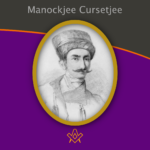 Alex Lishanin explores Mumbai and discovers the story of Lodge Rising Star of Western India and Manockjee Cursetjee – the first Indian to enter the Masonic Brotherhood of India. |
 Aleister Crowley - a very irregular Freemason Aleister Crowley, although made a Freemason in France, held a desire to be recognised as a 'regular' Freemason within the jurisdiction of UGLE – a goal that was never achieved. |
 Sir Joseph Banks – The botanical Freemason Banks was also the first Freemason to set foot in Australia, who was at the time, on a combined Royal Navy & Royal Society scientific expedition to the South Pacific Ocean on HMS Endeavour led by Captain James Cook. |
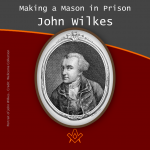 Making a Mason in Prison: the John Wilkes’ exception? |
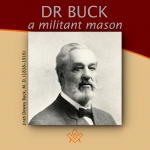 "To be a good man and true" is the first great lesson a man should learn, and over 40 years of being just that in example, Dr Buck won the right to lay down the precept. |
 Elias Ashmole: Masonic Hero or Scheming Chancer? The debate is on! Two eminent Masonic scholars go head to head: Yasha Beresiner proposes that Elias Ashmole was 'a Masonic hero', whereas Robert Lomas posits that Ashmole was a 'scheming chancer'. |
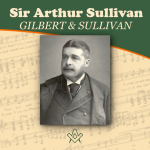 Sir Arthur Sullivan - A Masonic Composer We are all familiar with the comic operas of Gilbert and Sullivan, but did you know Sullivan was a Freemason, lets find out more…. |
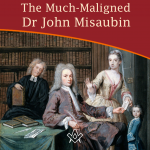 The Much-Maligned Dr John Misaubin The reputation of the Huguenot Freemason, has been buffeted by waves of criticism for the best part of three hundred years. |
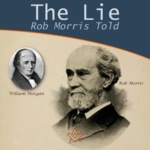 Was William Morgan really murdered by Masons in 1826? And what was the lie Masonic author Rob Morris told? Find out more in the intriguing story of 'The Morgan Affair'. |
 Lived Respected - Died Regretted Lived Respected - Died Regretted: a tribute to HRH The Prince Philip, Duke of Edinburgh |
 Who was Moses Jacob Ezekiel, a Freemason, American Civil War Soldier, renowned sculptor ? |
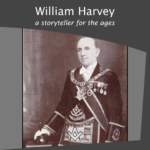 A Masonic author and Provincial Grand Master of Forfarshire in Scotland |
 Who was Philip, Duke of Wharton and was he Freemasonry’s Loose Cannon Ball ? |
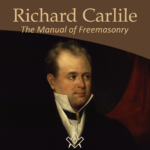 Richard Carlile - The Manual of Freemasonry Will the real author behind The Manual of Freemasonry please stand up! |
 Nicholas Hawksmoor – the ‘Devil’s Architect’ Nicholas Hawksmoor was one of the 18th century’s most prolific architects |
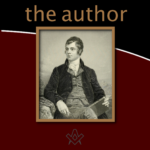 By Bro. Anthony Oneal Haye (1838-1877), Past Poet Laureate, Lodge Canongate Kilwinning No. 2, Edinburgh. |
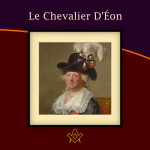 The Curious Case of the Chevalier d’Éon A cross-dressing author, diplomat, soldier and spy, the Le Chevalier D'Éon, a man who passed as a woman, became a legend in his own lifetime. |
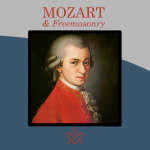 Mozart Freemasonry and The Magic Flute. Rev'd Dr Peter Mullen provides a historical view on the interesting topics |
masonic knowledge
to be a better citizen of the world
share the square with two brothers

click image to open email app on mobile device
Tubal Cain
Masonic Aprons NFT
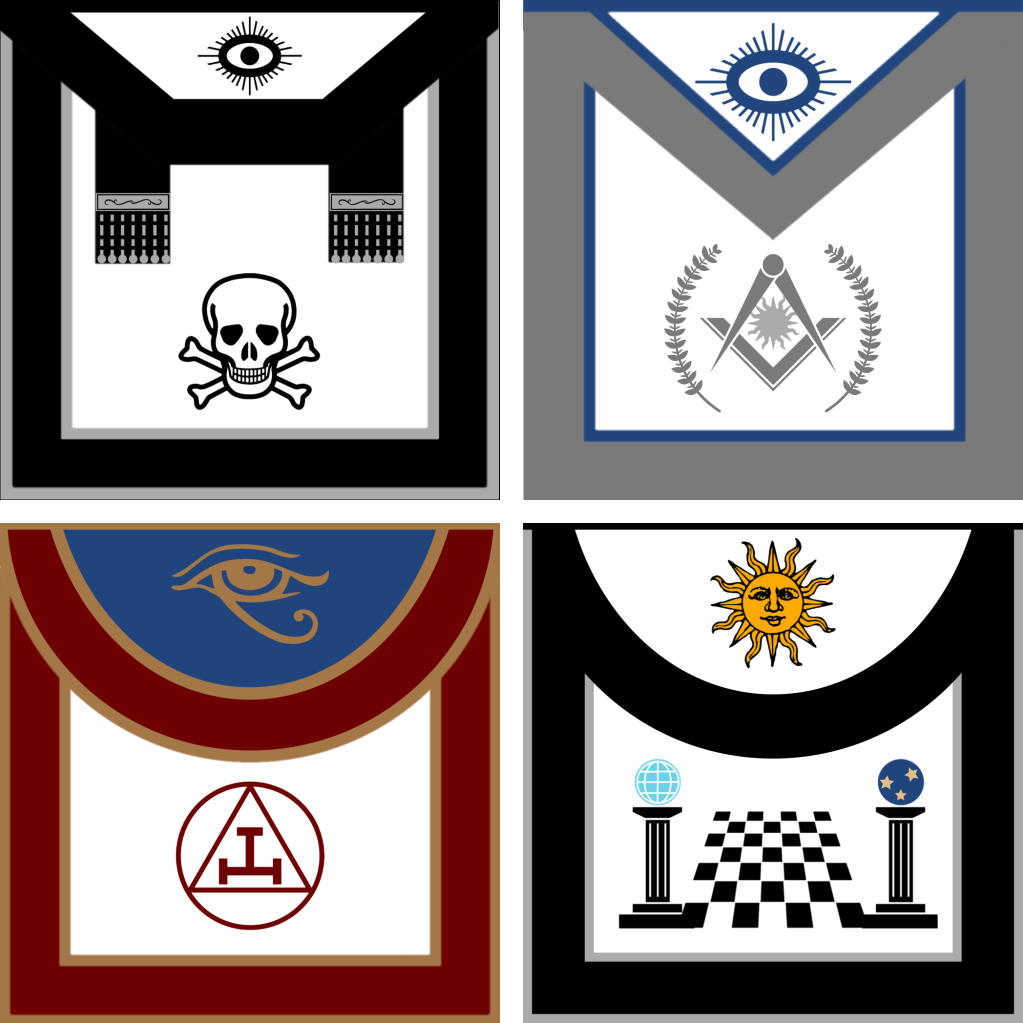



Each Tubal Cain Masonic Apron NFT JPEG includes a full size masonic apron and worldwide shipping
